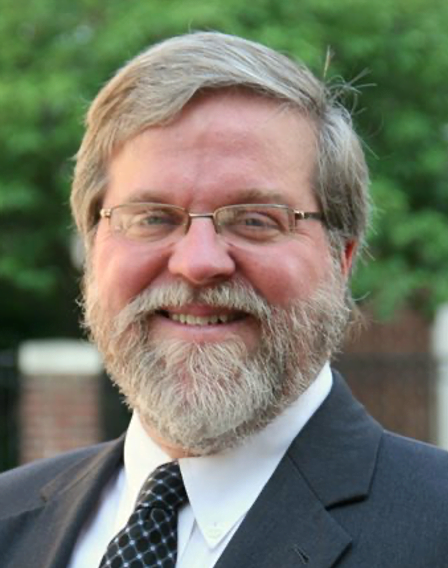“Holy, Holy, Holy” by Reginald Heber (1783-1826) is unique in many regards. Indeed, it spans many Christian traditions and centuries, unifying them in four timeless stanzas. Not only that, but Heber was an Anglican bishop whose ministry spanned continents and races, placing him as one of the heroes of the Christian faith.
Congregations continue to be inspired by Heber’s text in the twenty-first century. What makes this hymn so special? First, the rhyme scheme is unique since all four lines of each stanza rhyme with the word “holy.” One won’t easily find another hymn written this way.
Another reason why “Holy, holy, holy” is such a timeless hymn is its pairing with the well-known tune NICAEA. Written by John Bacchus Dykes (1823-1876), NICAEA has a unique elegance and magnificence, which in turn complements Heber’s stately language. There’s no cheap emotionalism and subjectivity apparent in the music or the words. The tune commences with a rising third, which could easily symbolize the Trinity, and continues with a chant-like character (there are few leaps and many consecutively repeated notes). Named after the Council of Nicaea, where the nature of the Trinity was shaped theologically, NICAEA is also a classic example of Victorian hymn tune writing, notably with its solid harmonies and subtle chromaticism.
Heber intended for “Holy, Holy, Holy,” written for Trinity Sunday, to be sung between the sermon and the creed by his parish in Hodnet. This was iconoclastic at the time, since hymn singing was prohibited in Church of England liturgies. In contrast, the Methodist societies in the eighteenth century were known for their hymn singing, along with the dissenting churches that had been using the hymns of Isaac Watts for nearly one hundred years. Consequently, then, British hymnology scholar J. R. Watson notes Heber was a man who “helped to dispel the idea that hymns were associated with Methodists and extreme Evangelicals” (Canterbury Dictionary of Hymnology). Unfortunately, he failed to persuade church authorities within the Church of England to grant permission for hymn singing during Sunday services while he was alive.
In 1826, Reginald Heber died in India from a stroke while bathing (often referred to in India as coup de soleil), leaving an impressive legacy within Christianity. That was because Heber was the Anglican bishop over all of India from 1823-1826. He worked tirelessly to build a training school for local clergy and traveled extensively around India preaching the gospel.
Michael Bodnyk About
Mr. Bodnyk holds the Bachelor of Science degree in vocal performance from Mannes College of Music, the Master of Church Music degree in choral conducting from Concordia University Wisconsin, and the Master of Arts degree in vocal performance from Hunter College/CUNY. He is currently pursuing the Doctor of Musical Arts degree in music education at Boston University.Mr. Bodnyk made his solo Carnegie Hall debut in October 2014 with the Cross Border Orchestra of Ireland after singing a series of concerts with the orchestra in Galway, Ireland. He is active as a soloist in concert, recital, oratorio, opera and operetta. Recent solo performances include Messiah (Handel), Mass in time of War (Haydn), Elijah (Mendelssohn), Paulus (Mendelssohn), Coronation Mass (Mozart), Christmas Oratorio (Saint-Saëns), Mass (Stravinsky), & Nun komm der Heiden Heiland BWV 61 (Bach).Mr. Bodnyk currently serves as the Minister of Music at St. Armands Key Lutheran Church in Sarasota, Florida where he oversees a comprehensive parish music ministry program.Before moving to Florida, he was a cantor, soloist, and choral section leader at Saint Patrick’s Cathedral in New York City for 16 years. At the Cathedral, he sang for morning masses broadcast on SiriusXM Radio and local cable television. With the Cathedral Choir, he was honored to sing for Pope Benedict XVI and Pope Francis, both in Rome and during their visits to the United States, as well as for President Bush at The White House. During his trips to Rome, Michael served as cantor at many churches and basilicas, including St. Peter’s Basilica. He was also the cantor for Cardinal Dolan’s first mass as a cardinal during the 2012 Consistory at the papal basilica of St. Paul Outside the Walls. In addition, he served as the cantor and Music Associate at the Basilica of St. Patrick’s Old Cathedral.A strong proponent of music education, Mr. Bodnyk taught elementary and middle school music within the Archdiocese of New York for over a decade. His various ensembles participated in music festivals throughout the tri-state area. One of his English handbell choirs was featured in a performance at Carnegie Hall, making history as the first handbell group to perform with a symphony orchestra in the venue. During that same performance, the handbell ensemble gave the world premier of a piece co-composed by Mr. Bodnyk. He has held teaching positions at the Academy of St. Jospeh, Saint Brigid School, and the Cathedral of St. Patrick Young Singers. Most recently, he led a group of AOSJ students and their families on a musical tour of Rome. His students performed at St. Peter’s Basilica, the Basilica of St. Francis (in Assisi), and in the Borghese Chapel at the Basilica of St. Mary Major.He is also served as the Co-Executive Director and Director of Arts of Camp Rhythmo, a nonprofit organization that offered summer programs, musical theater workshops, and after school programming in New York, Pennsylvania, and Florida.Mr. Bodnyk is the 2016 recipient of the Distinguished Young Alumnus Award from Moravian Academy (Bethlehem, PA), his alma mater. He is a past recipient of the Ruth K. Jacobs Award from The Choristers Guild, recognized for his work with children’s choirs, and the McKeenan Award from the Handbell Musicians of America.Mr. Bodnyk was invested as a Knight of the Equestrian Order of the Holy Sepulchre of Jerusalem, one of only two papal knighthoods, in November 2016 at St. Patrick’s Cathedral by His Eminence, Edward Cardinal O’Brien, the order’s Grand Master.


